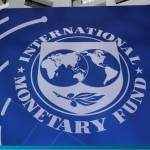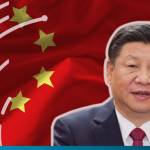Estimated reading time: 5 minutes
Like every aspect of the financial services industry, the correspondent banking world has changed a great deal over recent years due to technology, regulatory regimes, and risk management.
Today, banks require and rely on an effective correspondent banking network to support many of their products, from trade finance, credit, financial markets trading, fund transfers, and remittances globally.
My experience comes from managing the financial markets trading business for banks. In particular, I handled treasury products such as foreign exchange (FX), money markets, and fixed-income instruments, like short-term and long-term bonds. Having been in the business a long time I am well suited to look back and identify what the world of correspondent banking has lost and gained during its evolution into the digital age.
The traditional world of correspondent banking
Correspondent banking traditionally followed a similar approach to many other financial markets.
The lifeblood of any financial markets trading business is to develop a reliable, consistent and extensive network of prime liquidity providers, across the bank’s product line…
This strategy’s focus is to build broad, strong business relationships with a geographically diverse set of institutions that cover all markets required.
The foundation of such a correspondent network lay in extensive financial analysis to establish that each institution is financially robust and sustainable.
Layered on top is relevant information about those institutions, such as their management structure, reputation, product expertise, risk appetite, and operational capabilities.
Putting such a strategy in place, however, involves developing a personal relationship with the relevant counterparts in each organisation.
I can remember many eventful business trips with the head of correspondent banking to a variety of countries to meet and greet the relevant managers to explore the potential to deepen the business relationship in the treasury and foreign exchange markets.
Although this might sound like we went on “Jollies” these trips were often proved to be the most productive source of relevant information. We would learn about the wider context of the cities and countries we visited, their economic conditions, local market intelligence, the major market players, and the evolution of products and services on offer. Over my career, I can point to many situations when these strong personal relationships became invaluable to either of the institutions at times when volatility and uncertainty created irrational market behaviour.
All these tasks would be managed by a correspondent banking team whose skills included marketing, credit analysis, general knowledge of the institution’s product suite, management structure, and business strategy.
To be effective, it needed to be an integral part of the business, and its role needed to be taken seriously since banks historically had a strong and extensive network of correspondent relationships.
It used to be extremely labour-intensive, so it is easy to imagine it’s an expensive service to maintain. If it does not generate sufficient volumes of business to cover the cost of compliance, then it often becomes a target in times of cost-cutting, which, in my opinion, is shortsighted and to the detriment of the health of the global financial markets.

Correspondent banking in the digital age
Having had a short trip down memory lane let’s turn to the state of play of correspondent banking in the digital world.
The cost of correspondent banking has increased, and only some parts of the business are profitable. Many banks have been cutting off less profitable customers or regions, especially when returns do not match the investment costs, leading to a severe, negative impact on financial inclusion.
The major factor in the increase in costs of the model is regulatory compliance, particularly in relation to AML/CFT regulation.
A recent BIS review highlights that the majority of institutions are maintaining correspondent banking services only to serve their client base for cross-border payments and trade finance, to support the cross-selling of other products to respondent banks, or to preserve reciprocity in their correspondent relationships.
‘Derisking’
As a result of due diligence costs and financial crime compliance, a trend is emerging towards a reduction in risk appetite associated with correspondent banking networks. This is particularly true for tier two and three regional networks, which have resulted in some of these banks being cut off. Many such banks deal with remittances, which is a large part of the banking services in these regions and, therefore, a major contributor to the economy.
The banks that risk losing access to correspondent services tend to be the smaller institutions that are not part of an international group and are located in jurisdictions perceived to be too risky. This could lead to a fragmentation of the cross-border payments systems reducing the available options for these transactions.
Western economies dominate the international payments arena, with SWIFT being founded, headquartered, and administered by American and European entities. SWIFT is connected to 200 different territories, but 80% of the value of payments processed is denominated in USD and EUR.
Can fintech shed a silver lining?
The Western financial system has developed a set of best practices for managing risks in payment systems, which have been generally accepted and adopted globally. Banks tend to impose tighter controls on “high-risk” countries which results in more friction and higher costs.
Fintechs believe they can help resolve some of these issues where the traditional financial services industry is clearly failing. By ensuring technology is widely accessible, fintech firms will be able to offer far more comprehensive solutions than legacy players. The fintech ecosystem could reduce the risk profile and the cost of technology systems that can help correspondent banking networks survive and move forward.
One thing is clear there needs to be changed in order to tackle some of these key problems in the ever-growing global financial system.












































